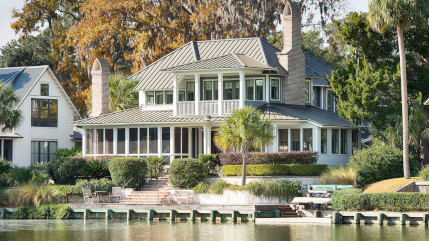
Lowcountry Arts
The art of the Carolina Lowcountry has evolved as a distillate of the history and geography which make Palmetto Bluff – and this region – unique in the world. It ranges in style from the primitive folk art of the Sea Islands to the exquisite and sophisticated “naïve” paintings of Jonathon Green – from the Charleston etchings of Hutty and Verner, to the stunning landscapes of Ray Ellis and Wes Fraser. The quality of light in the Lowcountry, in all seasons, has been compared to that of Provence, and this may help to explain why the region has been a magnet to artists all over the world for many years. But the most compelling draw is the stunning natural beauty of the rivers, marshes and maritime forest, as well as the hope, optimism and warm good nature of the people which characterize this rare and mystical place.















